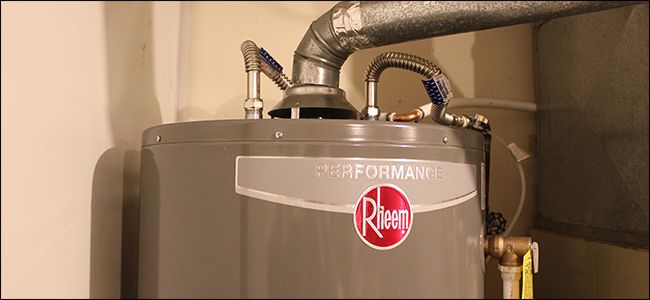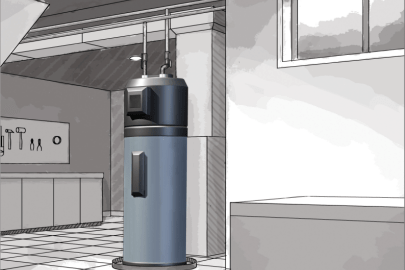Steps to Successfully Care for Your Home's Hot Water System
Steps to Successfully Care for Your Home's Hot Water System
Blog Article
We've encountered the article on How to Maintain Your Water Heater & Prolong its Life below on the internet and decided it made good sense to share it with you on this page.

Hot water is essential for everyday comfort, whether it's for a rejuvenating shower or washing dishes. To guarantee your hot water system runs effectively and lasts much longer, routine upkeep is essential. This post provides functional tips and insights on just how to preserve your home's warm water system to avoid interruptions and pricey repairs.
Introduction
Keeping your home's hot water system may appear challenging, yet with a few easy actions, you can ensure it operates efficiently for years to find. This overview covers every little thing from recognizing your hot water system to do it yourself upkeep tips and understanding when to call professional assistance.
Relevance of Maintaining Your Hot Water System
Normal upkeep not only prolongs the life-span of your warm water system yet also guarantees it operates effectively. Ignoring upkeep can lead to reduced effectiveness, greater power bills, and even premature failing of the system.
Indicators Your Hot Water System Needs Maintenance
Understanding when your warm water system requires focus can prevent major problems. Keep an eye out for indicators such as irregular water temperature, strange noises from the heating unit, or rustic water.
Recognizing Your Warm Water System
Prior to diving right into maintenance tasks, it's useful to recognize the standard components of your hot water system. Generally, this includes the water heater itself, pipes, anode rods, and temperature controls.
Monthly Upkeep Tasks
Routine month-to-month checks can aid capture small problems prior to they intensify.
Purging the Hot Water Heater
Purging your hot water heater eliminates debris accumulation, enhancing effectiveness and extending its life.
Checking and Replacing Anode Rods
Anode rods avoid corrosion inside the tank. Evaluating and changing them when worn is important.
Examining and Adjusting Temperature Settings
Changing the temperature settings ensures optimal efficiency and safety and security.
DIY Tips for Maintenance
You can execute numerous upkeep jobs yourself to keep your warm water system in leading problem.
Checking for Leaks
Routinely evaluate pipes and connections for leakages, as these can result in water damages and greater costs.
Testing Stress Alleviation Valves
Checking the pressure safety valve guarantees it works correctly and protects against extreme pressure buildup.
Shielding Pipelines
Insulating warm water pipelines decreases heat loss and can conserve energy.
When to Call a Professional
While do it yourself maintenance is valuable, some problems require specialist competence.
Complex Concerns Needing Expert Help
Instances include significant leaks, electrical troubles, or if your water heater is continually underperforming.
Routine Specialist Maintenance Benefits
Expert upkeep can include thorough evaluations, tune-ups, and making certain compliance with safety and security requirements.
Conclusion
Routine maintenance of your home's warm water system is essential for effectiveness, long life, and expense financial savings. By complying with these pointers and understanding when to look for expert aid, you can guarantee a trusted supply of hot water without unforeseen disruptions.
How to Maintain an Instant Hot Water Heater
Before tinkering with your hot water heater, make sure that it’s not powered on. You also have to turn off the main circuit breaker and shut off the main gas line to prevent accidents. Also turn off the water valves connected to your unit to prevent water from flowing into and out of the appliance. 2. When you’re done, you have to detach the purge valves’ caps. These look like the letter “T†and are situated on either side of the water valves. Doing so will release any pressure that has accumulated inside the valves while at the same time avoid hot water from shooting out and burning your skin. 3. When the purge valves’ caps are removed, you have to connect your hosing lines to the valves. Your unit should have come with three hoses but if it didn’t, you can purchase these things from any hardware or home repair shops. You can also get them from retail stores that sell water heating systems. Read the user’s manual and follow it to complete this task properly. When the hosing lines are connected, open the purge port’s valves. 4. You should never use harsh chemical cleaners or solutions when cleaning your unit. Make use of white vinegar instead. It should be undiluted and you’ll probably use about 2 gallons. 5. Now flush your water heater. This task should probably take about 40 minutes. We can’t give you specific directions for this because the procedure is carried out depending on the type, model and brand of your heater. With that being said, refer to the user’s manual. 6. When you’re done draining the unit, you have to turn off the purge port valves again. Remove the hosing lines that you earlier installed on each of the water valves. Put the valve caps (purge port) back in their respective places and be very careful so as not to damage the rubber discs that are found inside these caps. 7. Now that everything’s back in place, check your user’s manual again to find out how to reactivate your water heating system. 8. Once it is working, turn one of your hot water faucets on just to let air pass through the heater’s water supply pipes. Leave the tap on until water flows smoothly out of it. https://www.orrplumbing.com/blog/2014/september/how-to-maintain-an-instant-hot-water-heater/

I was made aware of that write-up on How to Maintain a Hot Water Heater in a Few Simple Steps through a good friend on another domain. Appreciated our piece? Please share it. Help someone else discover it. Kudos for your time. Please stop by our site back soon.
Visit Link Report this page